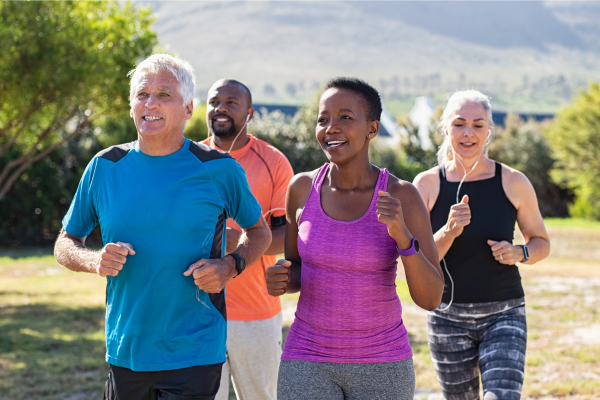
Yammara | Unwavering Support
Yammara Sambrine has been part of Epilepsy Alliance Florida since she moved to Miami in 2006. She had her first

These days, we’re sitting more, eating more, and moving a lot less, but there is a no-cost, low impact way to maintain and improve your health – and it only takes 30 minutes. Get up and out the door for a leisurely walk around your neighborhood! It can increase cardiovascular fitness, strengthen bones, reduce excess body fat, and boost muscle power and endurance. It can also reduce your risk of developing conditions such as heart disease, type 2 diabetes, osteoporosis, and some cancers. While still following the rules of social distancing, you can gain great benefits for your health.
Let’s discuss the benefits and the best way to utilize those 30 minutes.
Increased Cardiovascular and Pulmonary Fitness
The heart and lungs work together to make sure the body has the oxygen-rich blood it needs to function properly. The Pulmonary Loop, the right side of the heart, picks up the oxygen-poor blood from the body and moves it to the lungs for cleaning and re-oxygenating. One of the most cited studies on walking and health, published in a 2002 study in The New England Journal of Medicine, found that those who walked enough to meet physical activity guidelines (30 or more minutes of moderate activity on five or more days per week) had a 30% lower risk of cardiovascular disease, compared with those who did not walk regularly. The American Lung Association states that when you exercise, your body becomes more efficient at getting oxygen into the bloodstream and transporting it to the working muscles.
Strengthen Bones
Bones play many roles in the body: providing structure, protecting organs, anchoring muscles, and storing calcium. Like muscle, bone is living tissue that responds to exercise by becoming stronger. Young women and men who exercise regularly generally achieve greater peak bone mass (maximum bone density and strength) than those who do not. Weight-bearing and resistance exercises are the best for your bones. Weight-bearing exercises force you to work against gravity.
Reduce Excess Body Fat
While any exercise can burn calories, brisk walking will dip into internal belly fat, known as visceral fat, which contributes to the waistline. A 2008 University of Virginia study showed that women who performed 30 minutes of intense exercise, such as a fast-paced walk or run three times per week combined with slower walks two times per week, lost four times more body fat and six times more belly fat than women who walked more slowly five days per week. Higher intensity exercise can boost fat-burning hormones including growth hormone and epinephrine, and it also causes an increase in calories burned after exercising (also known as the “after-burn” effect).
Boost Muscle Power and Endurance
Muscular strength and endurance are two important parts of your body’s ability to move, lift things, and do day-to-day activities. Muscular strength is the amount of force you can put out or the amount of weight you can lift. Walking increases blood flow to tense areas and helps strengthen the muscles surrounding your joints. Muscular strength and endurance are important for many reasons, including increasing your ability to do activities, reducing the risk of injury, and building your confidence. Many people tend to show their strength by flexing their muscles.
Here are tips for the best way to utilize those 30 minutes:
– Walk with smooth, rhythmic motions at an easy pace.
– Walk briskly, instead of slowly, to increase your heart rate.
– Add a weighted vest or 1-pound dumbbells for some form of resistance.
– Walk uphill at least two to three times per week.
– End with stretching to cool the muscles down.
Walking daily has great health benefits, including losing weight. It is also one of the easiest and most cost-effective forms of exercise a person can do. For those with epilepsy, daily walks are also good for your mental health. It can help reduce feelings of anxiety and depression, and may even improve seizure control through improved overall health. Avoid over-exertion, becoming dehydrated, and hypoglycemia (low blood sugar) as these situations can increase the risk of a seizure happening. Let family or friends know your walking route before you leave and how long you will be out.
Many people will benefit from the 30-minute workout so, open your door and get to stepping!

Yammara Sambrine has been part of Epilepsy Alliance Florida since she moved to Miami in 2006. She had her first

Meet Teo Vasconcellos, an inspiring 18-year-old boy who came to the U.S. from Argentina in 2016. At the age of